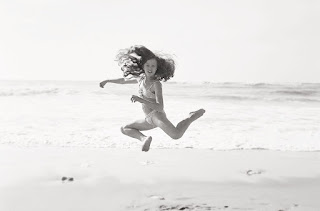Learning from the Best
This week has been eventful for me. I have been reading Teaching
Dance Studies, chapter one by Bill Evans, the former artistic director of
the Bill Evans Dance Company and professor emeritus at the University of
New Mexico. I was also fortunate enough to host Ailey II dancers for a
performance, master class and lecture demonstration at the college where I
teach.
Chapter One’s title is “Teaching Movement Analysis” and it
highlights the Laban/ Bartenieff Movement Analysis. In this chapter the reader
is reminded how important it is to encourage students to dance with “their
whole selves engaging the four functions of the psyche – thinking, sensing,
feeling and intuiting.” Reading this particular chapter while Ailey II was
visiting our campus could not have been better timed. Indeed, the Ailey dancers
exemplified this process during their performance and demonstrated perfectly how
artists can transcend that invisible wall that sometimes exists between the
stage and the audience. All the Ailey dancers were truly and fully alive during
their performance and consequently so were we as members of the audience.
This was an important event for our community, our college
and quite a revelatory experience for my young students. Consecutively, in my
next Choreography I class, I combined the essence of Bill Evans’ text with the echoes
of the Ailey II performance. I had my students examine the relationship between
shape, space and effort and I encouraged them to focus on coming up with some appropriate
movements and to realize these movements to their fullest potential. Afterwards I asked each student to make an
entry in their choreography journals reflecting on what was difficult about the
process, how they felt and what changes they would like to make for the next
class.
The outcome was positive as I could clearly see that after
having observed the Ailey II dancers over a 48-hour period in multiple aspects
of their daily routine, my students understood better the basic concepts of
choreography that we regularly discuss in class. They were more willing to take
risks, less afraid of failing and more willing to engage fully in the creation
of movements that were more in tune with who they are.



Comments
Post a Comment